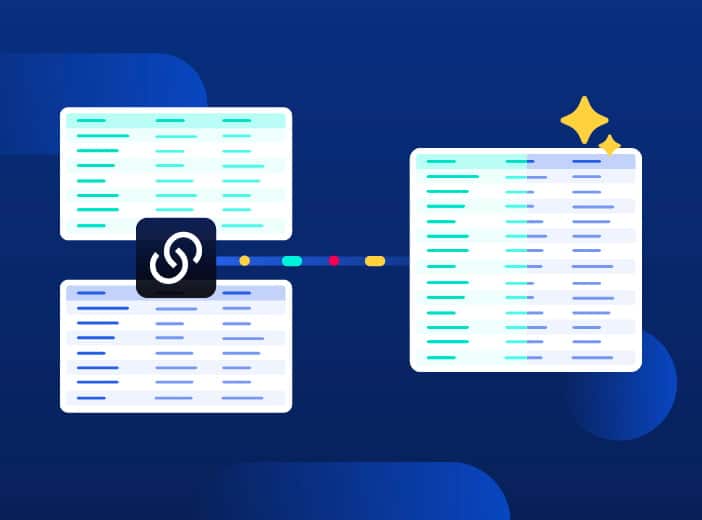Glossary
Hackathon
A hackathon is a time-limited event that brings together people with computer skills to develop new software, applications and features.
A Hackathon allow organizations to tap into new and innovative ideas, from both inside and outside the business. Data is a key part of these events, with organizational datasets often forming the basis for the event. Hackathons provide solutions to existing challenges, and deliver new innovations in terms of solutions and business models, based on real data.
What is a hackathon?
To understand hackathons, it is first necessary to understand the etymology of the term. Hackathon is the synthesis of two words:
- Hacker: in the collective imagination, hackers are shady programmers who demand ransoms from large companies after launching a cyber attack. In reality, most hackers work for a company or a public institution and are employed to detect flaws in their information systems. Their goal is to provide solutions to issues rather than to create problems.
- Marathon: a 26.2 mile race in which hundreds of runners participate, with the winner the runner that completes the course in the shortest possible time.
So what’s the connection between the two?
Like a marathon, a hackathon is an event in which dozens or hundreds of people participate, in order to achieve a goal in the shortest possible time (normally between 24 and 48 hours). A hackathon can bring together web developers, programmers, designers, project managers and others interested in the topic. The most important thing is that they have some level of computer programming skills, although in today’s no-code world, they don’t have to be deeply technical. Hackathons usually lead to the development of new software, new applications and new features to solve a specific problem or challenge.
How does a hackathon take place?
Hackathons take place over a limited period of time. Every hour counts, meaning that often people don’t sleep during them! It is divided into several parts.
Part 1 – The ideation phase
This part takes place before the hackathon even begins.
At this point, all those who have registered share their ideas on a dedicated platform. The platform often puts forward a specific challenge to be solved (such as a business or societal problem) and can share specific datasets that will help with the process. For example, a company looking to improve its sustainability performance might share information about its energy efficiency and invite people to come up with solutions for improvement.
Good to know: As hackathons are a real opportunity to create change and make a name for yourself, places are often limited.
Part 2 – Team building
At the beginning of the hackathon, teams are formed to move forward on a common project.
For this purpose, hackers with innovative ideas present their projects during an oral pitch. They then have 60 seconds to convince other hackathon participants to join their team.
People can then select the project they like best and become part of the team responsible for its development.
In general, there are five to ten teams per event, and four to five participants per team.
Part 3 – The Project
After the teams have been formed, everyone is committed to the progress of the project.
Since time is very short, hackers usually have several supporters:
- A coach: the coach specializes in hackathon issues. The coach supports the participants from a technical point of view.
- An organizer: the organizer helps with all logistics issues. For corporate hackathons, they could be the business manager responsible for solving the challenge that the event covers.
- During this time, the participants concentrate all their efforts to bring their project to life and to find an innovative solution.
Part 4 – Presentation
At the end of the hackathon, each team presents its projects to the jury, made up of experts. The presentation takes only five minutes.
After viewing the work of all the teams, the jury votes for the best project. The members of the jury take into account the originality, feasibility and potential of the project. And above all, the jury considers whether the project responds to a real need.
The winner can receive a cash prize, a place in an incubator, a meeting with investors or future employers. This makes it a great opportunity for developers and other IT professionals and is also a good way for participants to test their abilities under extreme pressure. For hackathon organizers it can help spot potential talent, and if it is a corporate hackathon increases engagement amongst teams.
Some examples of hackathons
World-famous hackathons
Hackathons first appeared in 1999 with the OpenBSD and JavaOne events. They then became more popular as technology evolved.
Today, the most famous hackathons are usually organized by Silicon Valley companies or those focused on startups. For example, Facebook developed its Like and Timeline features during a hacker event. Likewise, Google regularly organizes hackathons in various fields (startups, health, finance, environment, digital inclusion, etc.)
But this type of event isn’t just for big tech companies. As proof, Louis Vuitton organized a hackathon to develop a new, more collaborative and dynamic planning platform. Increasingly non-tech companies and public sector organizations are running hackathons to solve real-world business problems.
Hackathons and data
As you can see, hackathons cover all areas of activity. Since the goal is to find new ideas, hacker events overwhelmingly focus on data.
When this is the case, Opendatasoft may sponsor hackathons.
Here are some examples of events in which we have been involved:
- The St. Gallen Open Data Hack to find solutions related to the mobility and sustainability of open data.
- TDat’Hack 2022 for digital inclusion and education data.
Learn more

Blog
Opendatasoft boosts data enrichment, even when using the largest reference sources
Enriching your data is a key step in creating relevant insights and analysis that drives value. However, when it comes to using massive reference sources such as national company databases, detailed weather data or geographic/administrative boundary datato enrich your data, technical limitations often become a challenge.

Blog
Successfully scaling data products – best practice from McKinsey
Data products are central to increasing data consumption across the organization. But how can you ensure your data product program delivers lasting value? We explore the latest best practice from McKinsey, designed to scale data product creation and usage.

Blog
Combining data mesh and data fabric to drive greater data consumption
How can businesses organize their technology stacks to ensure that they both operate efficiently and meet the goal of increasing data consumption? We look at the importance of combining data mesh and data fabric approaches to drive success.
